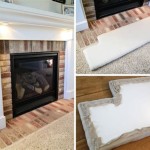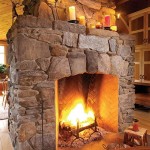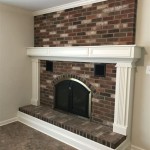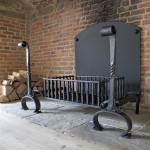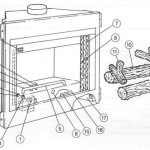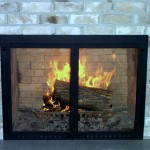How To Clean an Iron Fireplace Surround
An iron fireplace surround, whether antique or modern, adds a touch of elegance and warmth to any hearth. However, over time, soot, dust, and rust can accumulate, detracting from its beauty and potentially accelerating deterioration. Regular and proper cleaning is essential to maintain the appearance and longevity of an iron fireplace surround. This article provides a comprehensive guide on how to effectively clean an iron fireplace surround, addressing various types of soiling and offering preventative measures to keep it looking its best.
Assessing the Condition of the Iron Fireplace Surround
Before commencing any cleaning process, a thorough assessment of the iron surround's condition is paramount. This involves identifying the type of soiling present, noting the presence of rust, and determining the type of finish (e.g., painted, lacquered, or raw iron). This assessment dictates the appropriate cleaning methods and products to be employed. Failure to properly assess the condition could lead to the use of inappropriate cleaning agents, potentially causing damage to the iron's surface.
Begin by visually inspecting the surround for loose debris, such as ash or soot. Examine the surface for signs of rust, paying particular attention to areas prone to moisture exposure or those with visible wear. Note any existing paint or lacquer, as certain cleaning solutions can strip these finishes. Photographs taken before cleaning can serve as a valuable reference point for monitoring progress and identifying any areas requiring special attention.
Once the visual inspection is completed, a gentle touch test can reveal the texture of the soiling. Is it a light layer of dust or a thick, greasy film? This information helps determine the strength and type of cleaning solution needed. For instance, a light dusting might only require a dry cloth, while a greasy buildup may necessitate a degreasing agent.
Gathering the Necessary Cleaning Supplies
Having the right tools and cleaning agents is crucial for a successful cleaning process. The specific supplies needed will depend on the nature and extent of the soiling, as well as the type of finish on the iron surround. A well-stocked cleaning kit ensures efficiency and minimizes the risk of damaging the surround.
Essential supplies include: soft cloths (microfiber cloths are ideal), a soft-bristled brush (an old toothbrush can be useful for tight corners), a vacuum cleaner with a brush attachment, a mild dish soap (phosphate-free is preferred), warm water, white vinegar (for rust removal), baking soda (for stubborn stains), fine steel wool (grade 0000), mineral spirits (for removing grease and paint), rust remover (formulated for iron), paste wax (for protection), and safety gloves and eye protection.
The choice of cleaning solutions should be carefully considered. Harsh chemicals can damage the iron's finish and potentially cause corrosion. Always start with the mildest solution and gradually increase the strength as needed. For instance, begin with warm water and dish soap, and only move on to stronger solvents like mineral spirits or rust remover if necessary. When using any chemical cleaner, always test it in an inconspicuous area first to ensure it does not damage the finish.
Cleaning Methods for Various Types of Soiling
The cleaning method employed will vary depending on the type of soiling encountered. Different types of soiling require different approaches to ensure effective cleaning without causing damage. A systematic approach, starting with the least aggressive method, is recommended.
Removing Dust and Loose Debris: Begin by vacuuming the entire surround with a brush attachment to remove loose dust, ash, and soot. Pay close attention to crevices and ornate details where debris can accumulate. Follow up with a soft, dry cloth to wipe down the entire surface. This initial step is crucial as it removes the bulk of the soiling and prepares the surface for further cleaning.
Cleaning Soot and Smoke Stains: For soot and smoke stains, a solution of warm water and mild dish soap is usually effective. Mix a small amount of dish soap with warm water and use a soft cloth to gently wipe the surround. Avoid using excessive water, as this can lead to rust. Rinse the cloth frequently and wring it out thoroughly. After washing, dry the surround with a clean, dry cloth. For stubborn soot stains, consider adding a small amount of baking soda to the soapy water for extra cleaning power. Exercise caution when using baking soda, as it can be abrasive.
Removing Grease and Grime: Grease and grime can accumulate on the fireplace surround, particularly in areas near the firebox. Mineral spirits are an effective solvent for removing grease. Dampen a clean cloth with mineral spirits and gently wipe the affected areas. Be sure to work in a well-ventilated area and wear gloves and eye protection when using mineral spirits. After cleaning with mineral spirits, wipe the surround with a clean, dry cloth to remove any residue.
Removing Rust: Rust is a common problem on iron fireplace surrounds, especially those exposed to moisture. Mild rust can often be removed with white vinegar. Soak a clean cloth in white vinegar and apply it to the rusted areas. Let it sit for a few minutes, then scrub gently with a soft-bristled brush or fine steel wool (grade 0000). For more stubborn rust, a commercial rust remover formulated for iron may be necessary. Follow the manufacturer's instructions carefully when using rust remover. Always wear gloves and eye protection when handling rust removers. After removing the rust, rinse the area thoroughly with water and dry it completely to prevent further rusting.
Removing Paint: If the iron surround has unwanted paint, several methods can be employed for removal. A heat gun can soften the paint, allowing it to be scraped off with a putty knife. Chemical paint strippers are also effective, but they should be used with caution and in a well-ventilated area. Always wear gloves and eye protection when using paint strippers. After removing the paint, clean the surface thoroughly with mineral spirits to remove any residue.
Protecting the Cleaned Iron Fireplace Surround
Once the iron fireplace surround has been thoroughly cleaned, it is important to protect it from future soiling and rust. Applying a protective coating can help maintain its appearance and extend its lifespan.
Applying Paste Wax: Paste wax is an excellent protectant for iron. It creates a barrier against moisture and helps prevent rust. Apply a thin, even coat of paste wax to the entire surround with a clean cloth. Let it dry for the recommended time (usually 15-30 minutes), then buff it with a clean, dry cloth to a shine. Reapply paste wax every few months to maintain the protective barrier.
Applying Heat-Resistant Paint: If the iron surround is painted, consider using a heat-resistant paint designed for fireplaces. This type of paint can withstand the high temperatures of the firebox and will not chip or peel easily. Follow the manufacturer's instructions carefully when applying heat-resistant paint. Be sure to prepare the surface properly by cleaning and priming it before painting.
Other Protective Measures: In addition to applying paste wax or paint, other preventative measures can help protect the iron fireplace surround. Ensure that the fireplace is properly ventilated to minimize soot buildup. Regularly clean the fireplace and chimney to reduce the amount of soot and smoke that comes into contact with the surround. Avoid using harsh chemicals or abrasive cleaners on the surround, as these can damage the finish and make it more susceptible to rust. Consider using a fireplace screen to protect the surround from sparks and embers.
Addressing Specific Problems and Considerations
Certain types of iron fireplace surrounds may require specialized cleaning techniques. For example, antique iron surrounds may have delicate details that need to be cleaned with extra care. Cast iron surrounds can be prone to rusting, so it is important to take extra precautions to prevent moisture exposure.
Cleaning Antique Iron Surrounds: Antique iron surrounds often have intricate designs and delicate finishes. When cleaning these surrounds, it is important to use gentle methods and avoid harsh chemicals. A soft brush and mild soap and water solution are usually sufficient for removing dust and dirt. Avoid using abrasive cleaners or steel wool, as these can scratch the finish. Consider consulting with a professional antique restorer for advice on cleaning particularly delicate or valuable iron surrounds.
Cleaning Cast Iron Surrounds: Cast iron is particularly susceptible to rusting, so it is important to take extra precautions to prevent moisture exposure. After cleaning a cast iron surround, dry it thoroughly and apply a protective coating of paste wax or heat-resistant paint. Regularly inspect the surround for signs of rust and address any problems promptly. Consider using a dehumidifier in the room to reduce humidity levels.
Dealing with Stubborn Stains: In some cases, stubborn stains may require more aggressive cleaning methods. However, it is important to proceed with caution and avoid using harsh chemicals that could damage the iron. Before using a stronger cleaning agent, test it in an inconspicuous area to ensure it does not damage the finish. Consider consulting with a professional cleaning service for advice on removing particularly stubborn stains.
Maintaining a Clean Iron Fireplace Surround
Consistent maintenance is essential for keeping an iron fireplace surround looking its best. Regular cleaning prevents the buildup of soot, dust, and rust, minimizing the need for more intensive cleaning later on. By incorporating these preventative measures into a routine, the aesthetic appeal and structural integrity of the iron fireplace surround can be maintained for years to come.
Regular Dusting: Dusting the iron fireplace surround at least once a week prevents the accumulation of dust and soot. A soft cloth or a vacuum cleaner with a brush attachment can be used for this purpose. Paying close attention to crevices and ornate details ensures thorough dust removal.
Periodic Deep Cleaning: In addition to regular dusting, a periodic deep cleaning is recommended. This involves washing the surround with a mild soap and water solution to remove any accumulated grime or grease. The frequency of deep cleaning will depend on the usage of the fireplace and the amount of soiling it is exposed to.
Prompt Rust Removal: Rust can quickly spread on iron surfaces, so it is important to address any signs of rust promptly. As soon as rust is detected, clean the affected area and apply a rust inhibitor or protective coating.

How To Re A Cast Iron Fireplace

How To Re A Cast Iron Fireplace Direct Fireplaces

How To Keep Cast Iron Fireplaces Clean

How To Re A Cast Iron Fireplace Direct Fireplaces

How To Re A Cast Iron Fireplace Direct Fireplaces

How To Re A Cast Iron Fireplace Direct Fireplaces

How To Re A Cast Iron Fireplace Direct Fireplaces

How To Clean A Metal Fireplace Surround Ehow

How To Clean Your Fireplace With Brasso

Tips For Cleaning Your Fireplace Direct Fireplaces

